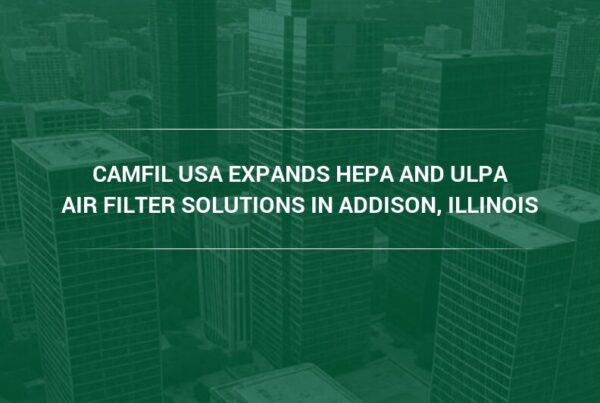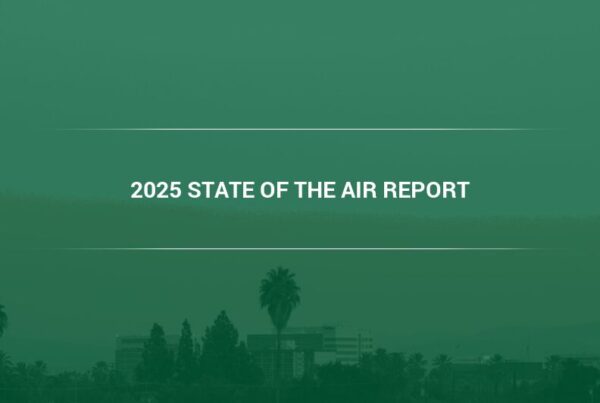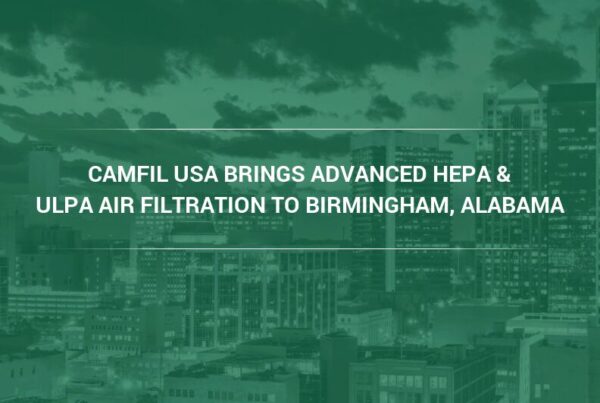Air pollution is a pressing global concern with significant health implications. With escalating air pollution levels, a persistent pandemic, and heightened awareness of indoor air quality, the role of High-Efficiency Particulate Air (HEPA) filtration is increasingly critical. As per 2023 data from the American Lung Association, many US cities, most of which are in California, have poor air quality based on measures of ozone and particle pollution. Looking ahead, urbanization, climate change, and technological advancements are expected to shape the future of air quality and the demand for HEPA filtration systems. Addressing air pollution at its source by promoting sustainable practices and reducing greenhouse emissions remains a crucial part of this discussion.
According to the American Lung Association State of the Air report, the cities in the United States with the worst air quality as of 2023 are primarily in California, with some cities in other states also affected. Here are the rankings for the most polluted cities based on three measures of pollution: ozone, short-term particle pollution, and year-round particle pollution.
Based on ozone levels, the most polluted cities in the United States in 2023 are:
- San Bernardino, California
- Riverside, California
- Los Angeles, California
- Tulare, California
- Kern, California
- Fresno, California
- Maricopa, Arizona
- Jefferson, California
- Placer, California
- San Diego, California
- Douglas, Colorado
- Harris, Texas
- Salt Lake City, Utah
- Madera, California
- Nevada, California
- Stanislaus, California
- Orange, California
- Kings, California
- Eddy, New Mexico
- Arapahoe, Colorado
- Mariposa, California
- Pinal, Arizona
- Sacramento, California
- Fairfield, Connecticut
- Imperial, California
Based on short-term particle pollution levels:
- Kern, California
- Fresno, California
- Mono, California
- Kings, California
- Klamath, Oregon
- Inyo, California
- Fairbanks North Star, Alaska
- Tulare, California
- Siskiyou, California
- Douglas, Nevada
- Stanislaus, California
- Tehama, California
- Plumas, California
- Washoe, Nevada
- Carson City, California
- Madera, California
- Nevada, California
- Butte, California
- Los Angeles, California
- Colusa, California
- Yakima, Washington
- Sutter, California
- Sacramento, California
- Placer, California
- San Joaquin, California
Based on year-round Particle Pollution:
- Kern, California
- Tulare, California
- Plumas, California
- Klamath, California
- Kings, California
- Fresno, California
- San Bernardino, California
- Riverside, California
- Lincoln, Montana
- Fairbanks North Star, Alaska
- Sutter, California
- Jackson, Oregon
- Los Angeles, California
- Madera, California
- Pinal, Arizona
- Stanislaus, California
- Okanogan, Washington
- Marion, Indiana
- Merced, California
- San Joaquin, California
- Yakima, Washington
- Wayne, Michigan
- Butte, California
- Josephine, Oregon
- Allegheny, Pennsylvania
Eleven counties received failing grades for all three measures of pollution: Fresno, Kern, Kings, Los Angeles, Madera, Riverside, San Bernardino, Stanislaus, Sutter, and Tulare in California and Pinal in Arizona
https://www.lung.org/research/sota/key-findings/most-polluted-places
Air pollution, both within our homes and in the outdoor environment, is a major global concern with significant implications for human health. With rising air pollution levels, an ongoing global pandemic, and a growing awareness of indoor air quality, it’s apparent that the future of air and the importance of High-Efficiency Particulate Air (HEPA) filtration are more relevant than ever before.
HEPA filters are meticulously designed to trap a minimum of 99.97% of particles that measure 0.3 microns in size, making them effective against a wide array of pollutants including dust, pollen, mold spores, pet dander, and even certain bacteria and viruses. Our understanding of air pollution is evolving, and we’re now recognizing that these pollutants are not just nuisances but potential threats to health. Long-term exposure to particulate pollution, for instance, has been linked to respiratory and cardiovascular diseases.
The COVID-19 pandemic has reinforced the importance of indoor air quality. As the virus is predominantly transmitted through respiratory droplets and aerosols, HEPA filtration has been identified as a crucial strategy in reducing airborne transmission in indoor settings. In fact, some studies suggest that air purifiers with HEPA filters can reduce the concentration of the virus that causes COVID-19 in the air.
Because HEPA filters cannot trap gaseous pollutants such as ozone, it is also important to implement an activated carbon or similar activated filter media in conjunction with HEPA filtration efforts in order to effectively target all kinds of pollution.
Recent data from the American Lung Association highlights this urgent issue. The cities in the United States with the worst air quality as of 2023 are predominantly in California, but several cities in other states are also affected. These rankings are based on three measures of pollution: ozone, short-term particle pollution, and year-round particle pollution. In some instances, cities like Fresno, Kern, Kings, Los Angeles, Madera, Riverside, San Bernardino, Stanislaus, Sutter, and Tulare in California, as well as Pinal in Arizona, received failing grades for all three measures of pollution.
Looking ahead, the future of air is likely to be influenced by three key factors:
- Increased urbanization and industrialization: As more people migrate to cities and industrial activities increase, air pollution levels are expected to rise. This will likely lead to an increased demand for effective air filtration systems, such as those equipped with HEPA filters.
- Climate change: Climate change is expected to exacerbate air pollution problems, with rising temperatures potentially leading to an increase in the formation of ground-level ozone, a harmful air pollutant. This suggests that the need for effective air filtration will only grow in the future.
- Technological advancements: The future may bring more advanced and efficient air purification technologies. For instance, we might see the development of ‘smart’ air purifiers that can monitor air quality in real time and adjust their operation accordingly.
In conclusion, the future of air is a significant concern that requires our immediate attention. HEPA filtration will undoubtedly continue to play a pivotal role in providing cleaner and healthier indoor environments. However, it’s also crucial that we address air pollution at its source by promoting sustainable practices and reducing greenhouse gas emissions. The severity of air pollution in many U.S. cities underscores the urgent need for both effective air filtration systems and broader strategies to reduce pollution levels.



